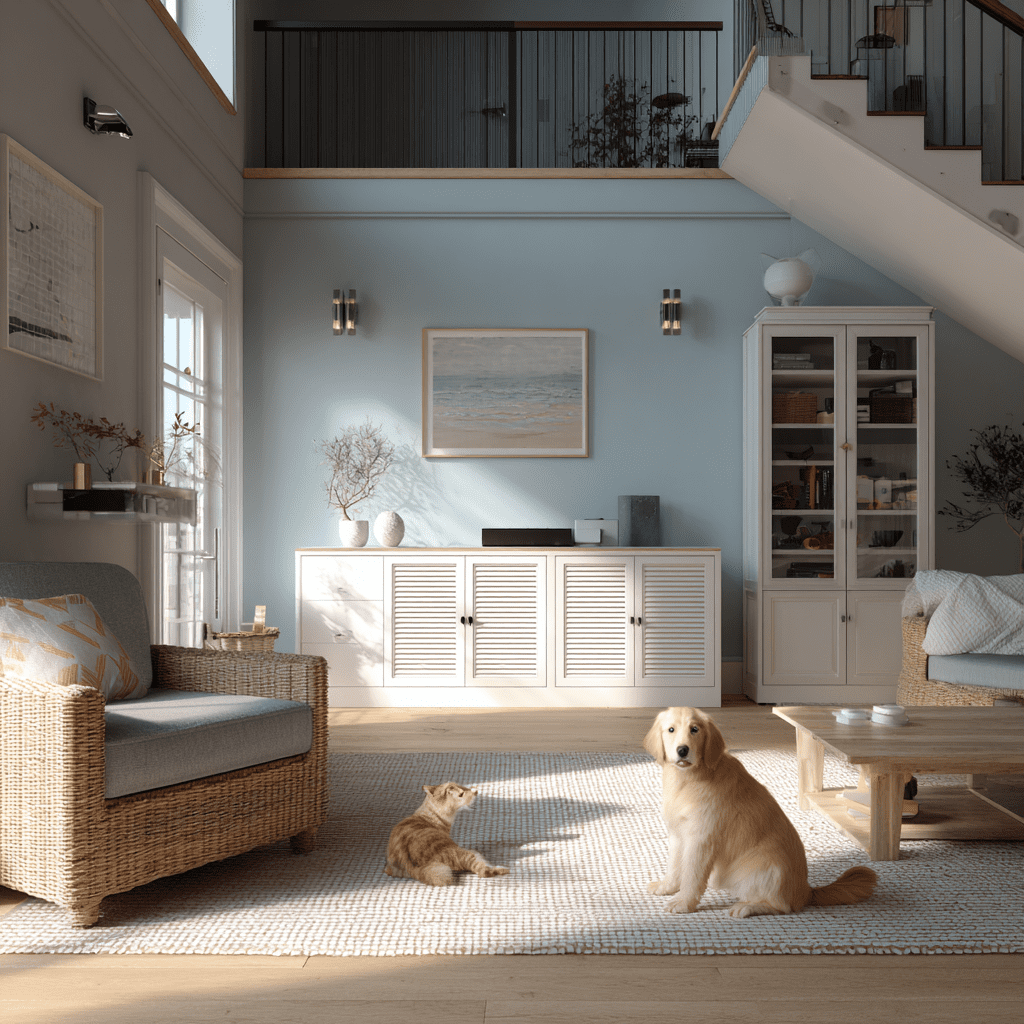🐾 How to Pet-Proof Your Home: The Ultimate Safety Guide for Pet Owners
Bringing a new pet into your home is a joyful experience, but it also comes with responsibility. Much like baby-proofing, pet-proofing your home is essential to ensure the safety of your furry friend and protect your belongings.
Pets are curious, playful, and sometimes mischievous — meaning your home needs to be ready. This in-depth guide will walk you through how to pet-proof your entire home room by room, ensuring a safe, happy environment for both you and your companion.
🏠 Why Pet-Proofing is Important
Pets can get into trouble quickly — chewing wires, swallowing small objects, or knocking over dangerous items. Just like toddlers, they explore with their mouths and paws. By pet-proofing, you:
- Prevent accidents or injuries
- Avoid costly vet visits
- Reduce stress and damage to property
- Build trust with your pet by creating a safe, welcoming space
🚪 Pet-Proofing Each Area of Your Home
1. Living Room Safety Tips
The living room is where your pet will likely spend most of its time. Here’s how to make it safe:
🔌 Hide or Secure Electrical Cords
Pets love chewing on cords, which can lead to burns or electrocution. Use cord concealers, bitter sprays, or plastic tubing to cover cords.
🧴 Remove Toxic Houseplants
Some popular indoor plants are toxic to pets, such as:
- Pothos
- Dieffenbachia
- Philodendron
- Peace Lily
Choose pet-safe plants like spider plants, areca palms, or Boston ferns.
📦 Store Fragile and Sharp Items Out of Reach
Place breakables or items with sharp edges on high shelves. Always avoid using glass decor near a pet’s reach.
2. Kitchen and Pantry Precautions
The kitchen is full of temptations — food, cleaning supplies, and sharp tools.
🚫 Keep Food Out of Reach
Even small amounts of chocolate, grapes, onions, or xylitol can be toxic. Use childproof locks on cabinets or trash cans.
🧂 Secure Cabinets and Drawers
Install latches to stop pets from rummaging through cleaning products or chemicals stored under sinks.
🔪 Watch for Sharp Objects
Knives and utensils should always be kept in drawers, not on countertops or near the sink’s edge.
3. Bathroom Hazards to Avoid
Bathrooms may seem harmless, but they hide many dangers.
🚽 Always Keep Toilet Lids Closed
Pets might try to drink toilet water, which could contain harmful bacteria or cleaning chemicals.
🧼 Lock Away Medications & Cleaners
Even small doses of human medication can be lethal to animals. Store all pills and soaps out of reach.
🛁 Watch Out for Slippery Floors
Consider using non-slip mats to reduce the chance of injury when your pet runs into the bathroom.
4. Bedroom Precautions
Bedrooms may seem cozy and safe, but there are hidden risks.
💊 Store Cosmetics and Medicines Safely
Make sure makeup, lotions, and medications are out of reach — pets may be tempted by the scent.
🧦 Avoid Small Choking Hazards
Socks, earrings, and buttons can all become choking risks. Keep them tucked away in drawers or closets.
🧸 Inspect Toys or Decor
Ensure stuffed animals or decor don’t have loose threads or pieces your pet could swallow.
5. Garage and Basement Warnings
These areas often contain dangerous chemicals and sharp objects.
🛢️ Store Chemicals Properly
Antifreeze, paint thinner, and fertilizers are extremely toxic. Store all items in sealed, locked cabinets.
🧰 Hide Tools and Sharp Objects
Nails, saws, and power tools should never be left on the floor or within paw’s reach.
🐭 Beware of Rodenticides
If you use rat poison, consider switching to pet-safe alternatives. Rodenticides are among the most common pet poisoning cases.
🪟 General Home Safety Tips

🪟 Secure Windows and Balconies
Use screens or window guards to prevent falls — especially if you live in an apartment.
🚪 Use Pet Gates
Block off areas that aren’t pet-ready using sturdy, chew-proof gates.
🎁 Avoid Holiday Hazards
During celebrations, keep decorations, tinsel, and chocolate out of reach. Don’t leave candles unattended.
🧠 Train Your Pet to Respect Boundaries
Even with the best pet-proofing, training is vital. Teach your dog or cat:
- Not to jump on counters
- To avoid chewing cords or furniture
- Not to eat off the floor
Positive reinforcement, like treats and praise, can go a long way toward keeping your home peaceful and safe.
🧼 Clean Often and Keep an Eye Out
Regularly inspect your home for new dangers. A dropped pill, an open window, or a loose wire can pose immediate risks. Keep a tidy environment to prevent accidents.
🐶 Pet-Proofing for Specific Pet Types
For Dogs:
- Avoid floor-length tablecloths (they might pull them)
- Choose durable chew toys
- Keep shoes, remote controls, and chargers off the floor
For Cats:
- Anchor shelves and furniture (they may climb)
- Hide string, thread, or hair ties
- Use cat trees to redirect scratching
🚨 Emergency Preparedness for Pets
Have a pet first-aid kit and emergency plan ready:
- Know the nearest 24/7 animal clinic
- Have pet poison control numbers handy
- Microchip your pet or use GPS tags
✅ Final Thoughts
Your home should be a safe haven for your pet — not a danger zone. By taking proactive steps to pet-proof each area, you’re protecting your furry family member and building a stronger bond.
Whether you’re adopting a puppy, kitten, or senior pet, proper safety and preparation will ensure a healthy, stress-free home for everyone.
